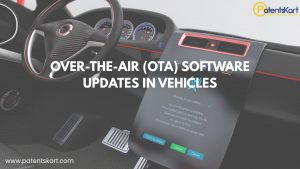The landscape of intellectual property (IP) is evolving rapidly, driven by the need for more efficient and precise tools in patent prosecution and portfolio management. Among these advancements, artificial intelligence (AI) has emerged as a transformative technology, significantly enhancing patentability and novelty search techniques. This article delves into how AI is revolutionizing these critical processes, providing practical insights, highlighting emerging trends, and offering actionable steps for IP professionals seeking to optimize their patent strategies.
Understanding Patentability and Novelty Searches
Before exploring the role of AI, it is crucial to understand the fundamental concepts of patentability and novelty searches.
Patentability Search: This search, often referred to as a prior art search, is conducted to determine if an invention meets the criteria for patent protection. It involves examining existing patents, published patent applications, and other relevant literature to ensure that the invention is novel, non-obvious, and useful.
Novelty Search: A subset of the patentability search, a novelty search specifically seeks to identify prior art that discloses the same or similar invention. The objective is to establish whether an invention is truly new and has not been publicly disclosed before the filing date.
Traditionally, these searches are manual and labor-intensive, requiring meticulous examination of extensive databases and documents. However, AI technologies are now streamlining these processes, enhancing both their efficiency and accuracy.
How AI Enhances Patentability and Novelty Searches
AI, particularly through machine learning (ML) and natural language processing (NLP), is significantly improving the way patentability and novelty searches are conducted:
1. Increased Search Efficiency and Accuracy
AI algorithms are capable of processing vast amounts of data more quickly and accurately than manual searches. By leveraging ML models trained on extensive patent databases, AI can rapidly identify relevant prior art, reducing the time and effort required to conduct comprehensive searches. This capability is especially valuable in complex technological domains where prior art may be difficult to locate through conventional keyword searches.
2. Enhanced Data Interpretation with Natural Language Processing (NLP)
NLP enables AI systems to understand and analyze the context of patent documents and related technical literature. Unlike traditional keyword searches, NLP can interpret the semantic meaning of text, allowing for more nuanced analysis of patent claims and descriptions. This functionality helps identify relevant prior art that may be expressed in different terminologies or languages, which might otherwise be overlooked in manual searches.
3. Predictive Analytics for Patentability Assessment
AI can also support patentability assessments by providing predictive analytics on the likelihood of patent approval. By analyzing historical patent data and identifying trends in patent grants and rejections, AI can offer insights into how similar inventions have been evaluated by patent offices. This predictive capability enables inventors and IP professionals to make more informed decisions regarding the pursuit of patent applications.
Emerging Trends in AI-Driven Patent Searches
As AI technology continues to advance, several key trends are shaping the future of patentability and novelty searches:
1. AI-Integrated Patent Search Platforms
An increasing number of IP management platforms are integrating AI-driven search capabilities into their offerings. These platforms combine sophisticated search algorithms with user-friendly interfaces, facilitating comprehensive searches and robust analysis. The integration of AI also enables continuous improvement of search models through ML, enhancing their precision over time.
2. Automated Patent Drafting Assistance
AI tools are extending their functionality beyond searches to assist in patent drafting. By analyzing prior art and existing patents, these tools can suggest optimal language and claim structures based on successful patent applications. This automated assistance can streamline the drafting process, reducing the likelihood of rejection due to poorly articulated claims or insufficient descriptions.
3. AI for Competitive Intelligence
AI-driven analytics are increasingly being utilized for competitive intelligence in the IP space. By monitoring patent filings, publications, and other IP activities, AI tools can provide strategic insights into competitor actions and emerging trends in specific technological fields. This intelligence is invaluable for companies aiming to stay ahead of market developments and strategically manage their patent portfolios.
Actionable Steps for Leveraging AI in Patent Searches
To effectively harness AI for enhanced patentability and novelty searches, IP professionals should consider the following steps:
- Adopt AI-Powered Search Tools: Evaluate and implement AI-powered patent search tools that offer advanced features such as NLP, ML, and predictive analytics. These tools can significantly improve search efficiency and accuracy, providing a strategic advantage in patent filing and prosecution.
- Integrate AI into Existing Workflows: Incorporate AI tools into current IP management workflows to optimize the patent search and drafting processes. Ensure that team members are adequately trained to use these tools effectively and understand the scope and limitations of AI-generated insights.
- Stay Informed on AI Developments: Continuously monitor advancements in AI technology and their applications within the IP domain. Engage in industry conferences, webinars, and professional training sessions to stay updated on emerging trends and best practices.
- Collaborate with AI Experts: Partner with AI specialists who focus on patent searches and IP management. These experts can provide valuable guidance on selecting appropriate tools, optimizing search strategies, and interpreting AI-generated data.
- Evaluate the Impact of AI on Patent Strategy: Regularly assess how AI tools influence patent strategies and outcomes. Utilize data-driven metrics to gauge the effectiveness of AI in enhancing search efficiency, improving accuracy, and bolstering overall patent quality.
Conclusion
Leveraging AI for enhanced patentability and novelty search techniques represents a significant advancement in the field of intellectual property. By adopting AI-driven tools and integrating them into established workflows, IP professionals can greatly improve the efficiency and accuracy of patent searches, minimize the risk of missing relevant prior art, and enhance the overall quality of patent applications. As AI continues to evolve, staying informed about new developments and adapting to technological advancements will be crucial for maintaining a competitive edge in the dynamic landscape of intellectual property.
Also Read: Influence of Artificial Intelligence on Copyright and Design Enforcement (https://patentskart.com/influence-of-artificial-intelligence-on-copyright-and-design-enforcement/)







